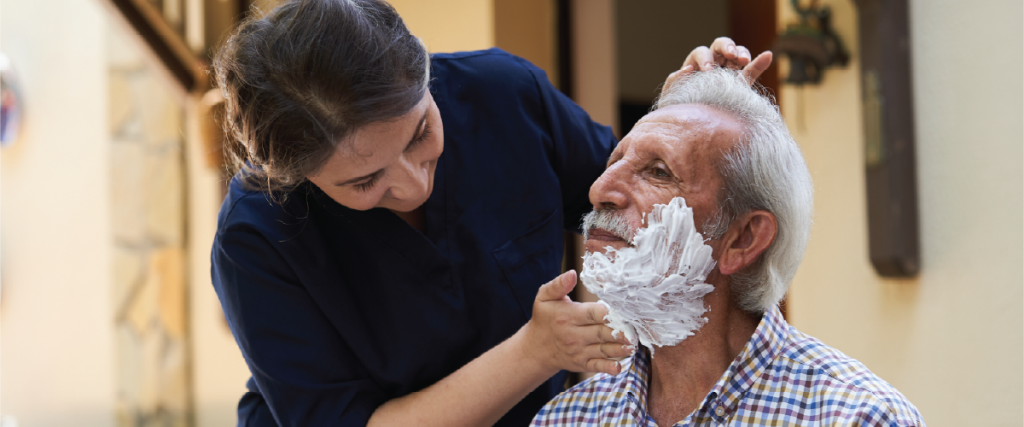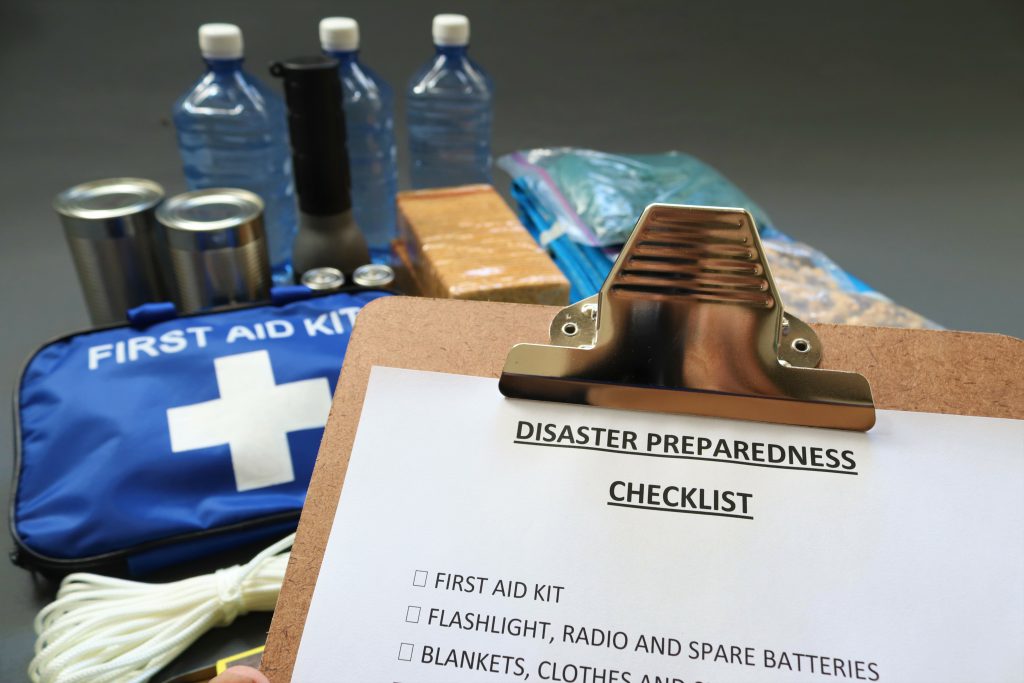Author: Angela Kraft
Resident’s Rights: What to Expect

When a loved one no longer is able to remain at home safely with supports it pays to have some basic knowledge when faced with the task of finding appropriate placement. Long-Term Care is a system unto itself with a language that most do not know if they have not had experience with either Skilled Nursing care or Assisted Livings facilities.
Take the time to explore options available for your loved one and take the time to personally visit facilities in the area that you would like your loved one to reside.
When you visit your facility options observe:
- The feeling of entering into the facility
- Smell or odors
- Volume of music, laughter, staff communications, other sounds
- Staff interactions with residents
- A meal when possible
Are:
- You greeted and welcomed by a staff
- Conversations with administration focused on financial rather than on resident care.
And visit during the weekend to observe staffing and the facility environment
The big Question is– are staff “Resident Centered”?
Types of Long -Term Care-
Skilled nursing care requires a skilled medical need for services to be authorized for insurance coverage. If the resident has Medicare it pays for the first 20 days and then the resident is required to private pay for the room and board for up to the next 100 days if there is no other payment source. For Medicare to cover, the individual must have a 3 day stay in the hospital. Medicare will not cover if the individual was admitted to the hospital for observation rather than treatment.
When an individual does not have a medical need for placement and is in need of long-term care services that is beyond assisted living care, options for payment may be long term care insurance, private pay or Medicaid.
The person Centered Care Plan in skilled Nursing Care or long term care guides the care that an individual has been assessed to need for their best quality of life.
Assisted Living level care is not a skilled level of care. According to Idaho Licensing and Certification “A Residential Assisted Living Facility is a facility or residence operated on either a profit or nonprofit basis for the purpose of providing necessary supervision, personal assistance, meals, and lodging to three or more adults”.
In an Assisted Living facility, the Negotiated Service Agreement guides the level of care required to meet the residents needs and increase or maintain their quality of life.
Residents and resident representative should have a voice in the development of these care plans.
Prior to signing an admission agreement—read the entire agreement and do not sign until you have read and understand what you are agreeing to. At a later time should you have questions or concerns it may be dependent upon what was in the admission agreement as to what rights you may have going forward. Keep a copy of the Admission Agreement that was signed upon admission.
Nationally staffing is at critical levels due to shortages. There has never been a more important time to be aware and involved in the long-term care of a loved one.
Know your rights. Every facility is required to post residents rights. When you have concerns or questions related to resident care contact your local Area Agency on Aging Long-Term Care Ombudsmen they are a great resource for information and resident advocacy.
Know who your advocates are and how to contact them- Ombudsmen are formally trained advocates that can help when family efforts aren’t enough.
Visit the ICOA website for additional information and services to help older Idahoan’s age with safety and dignity. www.aging.idaho.gov
Communication and Alzheimer’s

Alzheimer’s disease and other dementias gradually diminish a person’s ability to communicate. Communication with a person with Alzheimer’s requires patience, understanding and good listening skills. The strategies below can help both you and the person with dementia understand each other better.
- Changes in communication
- Communication in the early stage
- Communication in the middle stage
- Communication in the late stage
Additionally, the Idaho Commission on Aging website has Dementia Skills training that focuses on preparing and promoting communication and providing safe and comfortable care. See https://aging.idaho.gov/stay-educated/dementia-skills/.
Changes in the ability to communicate can vary and are based on the person and where he or she is in the disease process. Problems you can expect to see throughout the progression of the disease include:
- Difficulty finding the right words
- Using familiar words repeatedly
- Describing familiar objects rather than calling them by name
- Easily losing a train of thought
- Difficulty organizing words logically
- Reverting to speaking a native language
- Speaking less often
- Relying on gestures more than speaking
Communication in the early stage
In the early stage of Alzheimer’s disease, sometimes referred to as mild Alzheimer’s in a medical context, an individual is still able to participate in meaningful conversation and engage in social activities. However, he or she may repeat stories, feel overwhelmed by excessive stimulation, or have difficulty finding the right word. Tips for successful communication:
- Don’t make assumptions about a person’s ability to communicate because of an Alzheimer’s diagnosis. The disease affects each person differently.
- Don’t exclude the person with the disease from conversations.
- Speak directly to the person rather than to his or her caregiver or companion.
- Take time to listen to the person express his or her thoughts, feelings and needs.
- Give the person time to respond. Don’t interrupt unless help is requested.
- Ask what the person is still comfortable doing and what he or she may need help with.
- Discuss which method of communication is most comfortable. This could include face-to-face conversation, email or phone calls.
- It’s OK to laugh. Sometimes humor lightens the mood and makes communication easier.
- Don’t pull away; your honesty, friendship and support are important to the person.
Communication in the middle stage
The middle stage of Alzheimer’s, sometimes referred to as moderate Alzheimer’s, is typically the longest and can last for many years. As the disease progresses, the person will have greater difficulty communicating and will require more direct care. Tips for successful communication:
- Engage the person in one-on-one conversation in a quiet space that has minimal distractions.
- Speak slowly and clearly.
- Maintain eye contact. It shows you care about what he or she is saying.
- Give the person plenty of time to respond so he or she can think about what to say.
- Be patient and offer reassurance. It may encourage the person to explain his or her thoughts.
- Ask one question at a time.
- Ask yes or no questions. For example, “Would you like some coffee?” rather than “What would you like to drink?”
- Avoid criticizing or correcting. Instead, listen and try to find the meaning in what the person says. Repeat what was said to clarify.
- Avoid arguing. If the person says something you don’t agree with, let it be.
- Offer clear, step-by-step instructions for tasks. Lengthy requests may be overwhelming.
- Give visual cues. Demonstrate a task to encourage participation.
- Written notes can be helpful when spoken words seem confusing.
Communication in the late stage
The late stage of Alzheimer’s disease, sometimes referred to as severe Alzheimer’s, may last from several weeks to several years. As the disease advances, the person with Alzheimer’s may rely on nonverbal communication, such as facial expressions or vocal sounds. Around-the-clock care is usually required in this stage. Tips for successful communication:
- Approach the person from the front and identify yourself.
- Encourage nonverbal communication. If you don’t understand what the person is trying to say, ask him or her to point or gesture.
- Use touch, sights, sounds, smells, and tastes as a form of communication with the person.
- Consider the feelings behind words or sounds. Sometimes the emotions being expressed are more important than what’s being said.
- Treat the person with dignity and respect. Avoid talking down to the person or as if he or she isn’t there.
- It’s OK if you don’t know what to say; your presence and friendship are most important.
Please see Idaho Commission on Aging website https://aging.idaho.gov/caregiver/ for additional education and training, schedule of local events in our community and Area Agencies on Aging contact information.
Resource: alz.org/help-support/caregiving/daily-care/communications
Five Steps for Family Caregivers

Caring for a family member or a close friend is one of the most important roles you will ever play. It may start by simply running errands, driving them to their doctor appointment or shopping. Later, you may find yourself handling their medications, meals, finances, activities of daily living or other medical complexities. Therefore, it is important to know your loved one’s healthcare preferences with a plan in place before a crisis occurs. Here are five important steps to help you through this caregiving journey.
Step One: Start the conversation – “I just read an article about gathering all your important papers. Sometime can you show me where yours are and what you’d like us to do just in case?” Be open, express your love and concern, most importantly listen, and respect your loved one’s wishes regarding home, health, finances, and legal needs. Include other trusted family members to be a part of the process.
Step Two: Form Your Team – Go deep and wide and decide who is in charge. Team members do not have to live nearby or have lots of time available to be useful. Family or friends can work behind the scenes with meal planning/organizing, chores, bill paying, and assistive technology solutions.
Step Three: Make a Plan – Keep the plan simple and include immediate and future needs. There are several roles’ people can help with; an assertive advocate to communicate with medical professionals or insurance companies; if your loved one wants to move, assign someone to research locations and facilities. Someone else might offer to spend some weekends sorting through their personal belongings.
Step Four: Find Support – A variety of services are available to people aged 60 and over and their caregivers and older relative caregivers 55 or older. This support can be found through your local area on aging. The Idaho Commission on Aging website https://aging.idaho.gov/stay-educated/caregiver-skills/ provides an array of Caregiver Skills videos sponsored by AARP’s Home Alone Alliance. Additionally,
- Hire Help – housekeeping, meal preparation, laundry, shopping, bathing
- Secure Safety – Handrails, grab bars, night-lights, adjustable shower seats
- Stay organized – Caregiving apps such as Caring Village and Medisafe
Step Five: Care for yourself – Exercise, maintain a healthy diet, and sleep. Overall, be sure to take time for activities you enjoy.
Resource: https://www.aarp.org/caregiving/basics/info-2019/first-time-caregiver-tips.html?intcmp=AE-CAR-CRC-LL (AARP, Family Caregiving Guide)
Visit the ICOA Website for Caregiver information
Contact your local Area Agency on Aging for programs and services
For free education on healthy caregiving topics visit the Idaho Commission on Aging’s Caregiving Education webpage.
Emergency Preparedness for Older Adults

Follow these easy steps to make sure you’re protected.
Natural disasters, such as wildfires, floods, and blizzards, may force you to evacuate your home or shelter-in-place at short notice. It is important to know what to do in case of an emergency well before disaster strikes.
If you are an older adult living in the community, you may face some challenges during an emergency. For example, you may have mobility problems, or chronic health conditions, or you may not have any family or friends nearby to support you. Support services that are usually available, such as help from caregivers or in-home health care and meal delivery services, may be unavailable for a period of time. In addition, older adults may experience challenges that come with advanced age, such as hearing or vision problems or cognitive impairment, which may make it difficult to access, understand, and respond to emergency instructions.
You or the person you care for can be prepared for emergency situations by creating a plan, reviewing or practicing it regularly, and keeping an emergency supply kit.
Creating a Plan
The first step in preparing for an emergency is creating a plan. Work with your friends, family, and neighbors to develop a plan that will fit your needs.
- Choose a contact person who will check on you during a disaster, and decide how you will communicate with each other (for instance, by telephone, knocking on doors). Consider speaking with your neighbors about developing a check-in system together.
- Create a list of contact information for family members and friends. Leave a copy by your phone(s) and include one in your Emergency Supply Kit.
- Plan how you will leave and where you will go during an evacuation. If you are living in a retirement or assisted living community, learn what procedures are in place in case of emergencies. Keep a copy of exit routes and meeting places in an easy-to-reach place.
- Create a care plan and keep a copy in your Emergency Supply Kit. Try out the CDC’s easy-to-use care plan template.
- If you have medical, transportation, or other access needs during an emergency, consider signing up for SMART911, Code Red, or your local county registry, depending upon which service your area uses to helps first responders identify people who may need assistance right away.
Creating an Emergency Supply Kit
After an emergency, you may not have access to clean water or electricity. Make sure you are prepared with your own supply of food, water, and other items to last for at least 72 hours.
- Visit Ready.gov for a list of basic items to gather for your Disaster Supply Kit.
- Medical-Related Items:
- A 3-day supply of medicine, at a minimum. If medications need to be kept cold, have a cooler and ice packs available.
- ID band (full name, contact number for family member/caregiver, and allergies)
- Hearing aids and extra batteries
- Glasses and/or contacts and contact solution
- Medical supplies like syringes or extra batteries
- Information about medical devices such as wheelchairs, walkers, and oxygen including model numbers and vender.
- Documents (Keep physical copies in a waterproof bag and take photos of each document for backup):
- Contact information for family members, doctors, pharmacies and/or caregivers
- List of all medications, including the exact name of the medicine and the dosage, and contact information for pharmacy and doctor who prescribed medicine
- List of allergies to food or medicines
- Copies of medical insurance cards
- Copies of a photo ID
- Durable power of attorney and/or medical power of attorney documents, as appropriate.
Taking these steps will put you and/or your caregivers in a better position to deal with emergencies that may require you to evacuate or shelter in place. Contact your local Area Agency on Aging for information on senior services and resources in your area.
 Official Government Website
Official Government Website